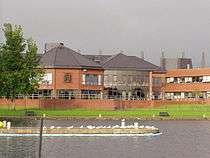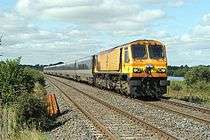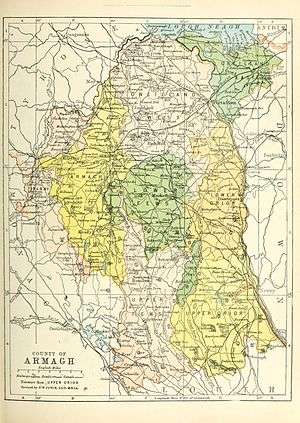Craigavon
| Craigavon | |
| Irish: Creag Abhann[1] | |
 Craigavon Civic Centre from Craigavon Lakes |
|
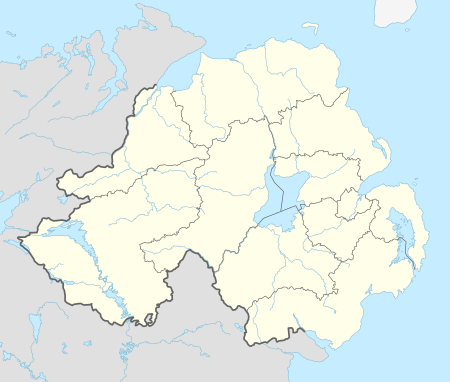 |
|
| Population | 16,000 (2011 estimate) |
|---|---|
| Irish grid reference | J042562 |
| – Belfast | 28 miles (33 km)[2] |
| District | Armagh, Banbridge and Craigavon |
| County | County Armagh |
| Country | Northern Ireland |
| Sovereign state | United Kingdom |
| Post town | CRAIGAVON |
| Postcode district | BT62 BT63 BT64 BT65 BT66 BT67 |
| Dialling code | 028 38, +44 28 |
| Police | Northern Ireland |
| Fire | Northern Ireland |
| Ambulance | Northern Ireland |
| EU Parliament | Northern Ireland |
| NI Assembly | Upper Bann |
| Website | www.craigavon.gov.uk |
|
|
Coordinates: 54°26′50″N 6°23′18″W / 54.447222°N 6.388333°W
Craigavon (Irish: Creag Abhann) is a settlement in north County Armagh, Northern Ireland. It is a planned settlement that began construction in 1965 and was named after Northern Ireland's first Prime Minister, James Craig, 1st Viscount Craigavon. It was planned as to link Lurgan and Portadown. Among locals today, "Craigavon" refers mainly to the area spanning the lakeland area between Lurgan and Portadown. The lakes are a popular watersports training and recreational area. Other sports facilities in Craigavon include Craigavon ski slope, golf courses, recreation centre, football and GAA pitches, cycle paths and walking trails - all a stones throw from Tannaghmore Gardens Petting Farm and close to Lough Neagh Nature Reserve.
Craigavon sometimes refers to the much larger Craigavon Urban Area, which includes Craigavon, Lurgan, Lough Neagh Nature Reserve, Portadown, Waringstown and Bleary.
History
Original plans
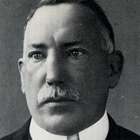
Craigavon was planned as a "New City" for Northern Ireland that would mirror cities such as Milton Keynes in Great Britain. It was conceived as a linear city that would link the towns of Lurgan and Portadown to create a single urban area and identity. The argument for a new town was based on projections indicating population increases over the following decades that would require large scale house building. Similar projects had been successfully completed in Great Britain so it was in some ways a symbol of Northern Ireland as both modern and a part of the British mainstream. Several reasons have been suggested for the suitability of the site including the existing population centres, industrial base, proximity to Belfast and the belief that Craigavon would help spread development away from Belfast. It was hoped that residents of Belfast would be attracted by the suburban nature of Craigavon's design and that business would see it as an interesting alternative. The M1 motorway (Northern Ireland) was constructed to link the new city with Belfast and there were plans to replace the Lurgan and Portadown Railway Stations with a single high speed terminal in central Craigavon. The Craigavon Area Hospital was built to replace small hospitals in the local towns.
The design of Craigavon was imbued with the spirit of the age. The planners separated motor vehicles from pedestrians and cyclists wherever possible, creating a dedicated network of paths allowing residents to travel across Craigavon without encountering traffic. The road network for motor vehicles used roundabouts instead of traffic lights at junctions, giving the planners the ability to easily increase the number of lanes if it became necessary. Electricity and other cables were placed underground and street lighting was standard throughout. The planners clustered the housing developments around small 'village centres' with associated retail space, leisure facilities, post offices, primary schools, pharmacies, community centres and other civic amenities. There was a total separation of industrial land-use from all other uses. All estates were built with security concerns in mind, with one vehicle entry/exit point.
Craigavon was designed to be a very child-friendly environment with small playgrounds dotted throughout the residential areas. There was an emphasis on providing green space in the housing estates and safe paths to cycle on. The new town was also provided with many civic amenities including a leisure centre, libraries, shopping centre, civic centre, a large park with artificial lakes, playing fields, a petting zoo, public gardens and an artificial ski slope.
The Troubles
For more information, see The Troubles in Craigavon, which includes a list of incidents in Craigavon during the Troubles resulting in two or more fatalities. On 10 March 2009 the CIRA claimed responsibility for the fatal shooting of a PSNI officer in Craigavon — the first police fatality in Northern Ireland since 1998. The officer was fatally shot by a sniper as he and a colleague investigated "suspicious activity" at a house nearby when a window was smashed by youths causing the occupant to phone the police. The PSNI officers responded to the emergency call, giving a CIRA sniper the chance to shoot and kill officer Stephen Carroll.[3]
Geography

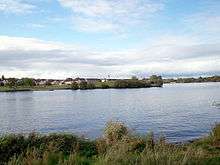
Craigavon lies on an area of flat land near the southeastern shore of Lough Neagh. The surrounding settlements (listed clockwise) are Aghacommon (north), Lurgan (northeast), Corcreeny (east), Bleary (southeast) and Portadown (southwest). It is separated from these surrounding settlements mostly by fields. The narrow gap between Craigavon and Portadown is marked by the fields/playing fields in Lisnisky and Kernan. The gap between Craigavon and Lurgan is narrower, being marked by fields/playing fields in Ballynamony, Tullygally, Taghnevan and Monbrief.[4]
Between Craigavon and Aghacommon is the Portadown–Lurgan railway line and Craigavon Lakes. The railway line runs between the two lakes. Further north is the M1 motorway, which runs parallel with the railway line.[4]
Demography
For census purposes, Craigavon is not treated as a separate entity by the NI Statistics and Research Agency (NISRA). Instead, it is combined with Portadown, Lurgan and Bleary to form the "Craigavon Urban Area". This makes it difficult to glean an accurate demographic picture of the area that is generally regarded as Craigavon – the mainly residential area between Portadown and Lurgan.[5] This area roughly corresponds with the Drumgask,[6] Drumgor,[7] Kernan[8] and (part of) Taghnevan[9] electoral wards.
On the day of the last census (27 March 2011) the combined population of these wards was about 16,000.
Craigavon has an 800-strong Chinese community and a high level of racially motivated incidents.[10]
Craigavon has been a historically Protestant town; however, in recent times, the electorate has become gradually less so, with higher numbers of Catholics and people of other religions or people of no declared religion.[11]
Education
Craigavon was provided with a number of schools.
- Brownlow Integrated College was one of the first integrated high schools in Northern Ireland
- Drumgor Primary School, controlled (i.e. state) primary school
- Lismore Comprehensive School, the largest school in Northern Ireland, run by the Council for Catholic Maintained Schools (CCMS)
- Moyallon Primary School, controlled
- St Anthony's Primary School, CCMS
- St Brendan's Primary School, CCMS
- Tullygally Primary School, controlled, a mixed religion school. It has about 100 pupils at any one time. It was built by the government with the original founding of Craigavon "city" and was part of the library board. The size of the primary school was reduced in recent years and half of it now accommodates an adult learning centre.There are many more primary and secondary schools in the wider Craigavon areas of Lurgan, Portadown, etc.
Sport
- A.F.C. Craigavon play association football in the Mid-Ulster Football League.
- Éire Óg Gaelic Football Club – competes in Division II of the Armagh All County League. Have won both Junior and Intermediate honours.
- Craigavon United F.C. – soccer – won the Milk Cup in 1986.
- Craigavon City F.C. – soccer club founded in 2007. In their first season they finished 4th in the Mid Ulster fourth division and won the John Magee Memorial Cup after a 2–1 victory over Armagh Rovers.
- Craigavon Cowboys American Football – the only American football team in County Armagh. 2009 Winners of the IAFL DV8s league. Returned to the IAFL proper in 2010.
Twin towns
Craigavon is twinned with:
 LaGrange, Georgia, United States
LaGrange, Georgia, United States Ballina, County Mayo, Ireland
Ballina, County Mayo, Ireland
Gallery
|
See also
| Wikimedia Commons has media related to Craigavon. |
References
- ↑ Northern Ireland Placenames Project, Queens University Belfast – Postal Towns
- ↑ Free Map Tools – "How Far Is It Between?"
- ↑ "Continuity IRA shot dead officer". London: BBC News. 10 March 2009. Retrieved 10 March 2009.
- 1 2 "OSI Map Viewer". Ordnance Survey Ireland. Retrieved 25 February 2010. – Note: Select "historic" to view the townland boundaries
- ↑ "The 'lost' city of Craigavon to be unearthed in BBC documentary". Portadown Times. 30 November 2007. Retrieved 3 May 2010.
- ↑ NISRA – Ward Information for Drumgask ward 95LL12
- ↑ NISRA – Ward Information for Drumgor ward 95LL13
- ↑ NISRA – Ward Information for Kernan ward 95LL16
- ↑ NISRA – Ward Information for Taghnevan ward 95LL22
- ↑ Irish Times 29 May 2008
- ↑ "Craigavon Borough Council". Ulster's Doomed!. Blogger. 25 November 2008.


